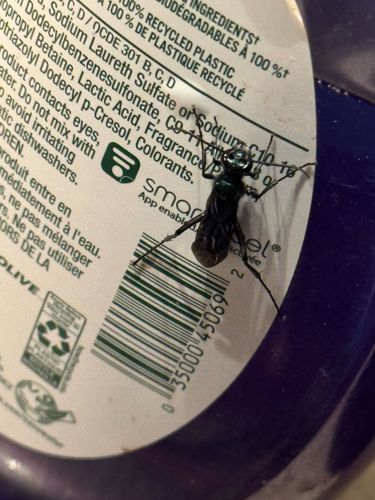Cuckoo Wasp
Scientific Name: Chrysis ignita (likely, as it's a common representative of the family)
Order & Family: Hymenoptera, Chrysididae
Size: Typically 5-15 mm (0.2-0.6 inches) in length.

Natural Habitat
Found in a variety of habitats, often near the nests of their host insects. This includes gardens, meadows, forests, and urban areas where bees and wasps are present.
Diet & Feeding
Adult cuckoo wasps primarily feed on nectar and pollen from flowers. The larvae are parasitic, feeding on the larvae or provisions within the nests of other solitary bees and wasps.
Behavior Patterns
Cuckoo wasps are often solitary. Females are kleptoparasites or parasitoids, laying their eggs in the nests of other bees and wasps (often solitary species). Their larvae then consume the host's eggs, larvae, or food stores. They are known for their bright, metallic coloration and their ability to curl into a defensive ball when threatened.
Risks & Benefits
Generally considered harmless to humans as they rarely sting. Their sting is not potent and is mainly used against other insects. Ecologically, they play a role in regulating the populations of other solitary bee and wasp species. They are also considered beneficial as pollinators due to their nectar-feeding habits.
Identified on: 9/21/2025